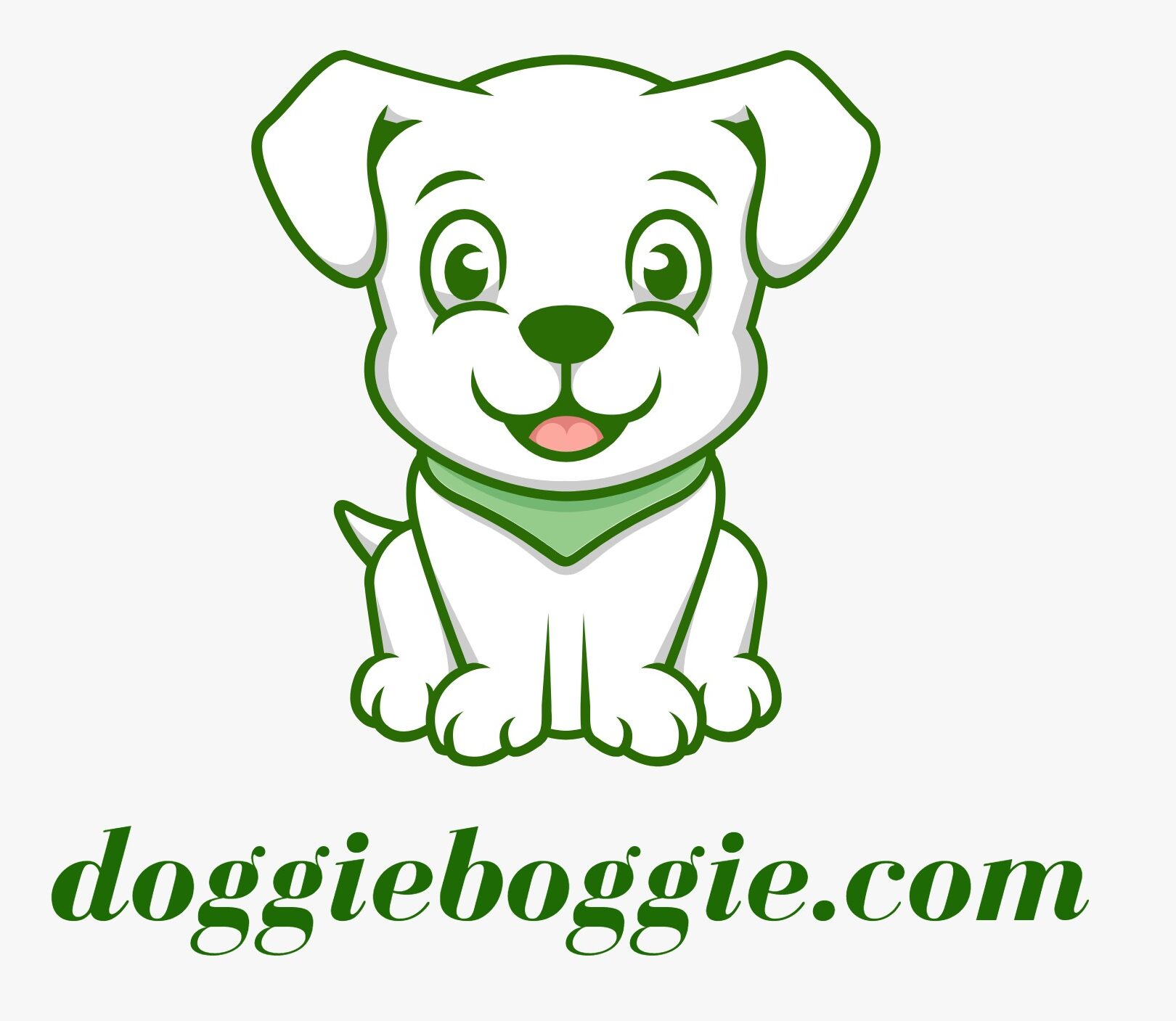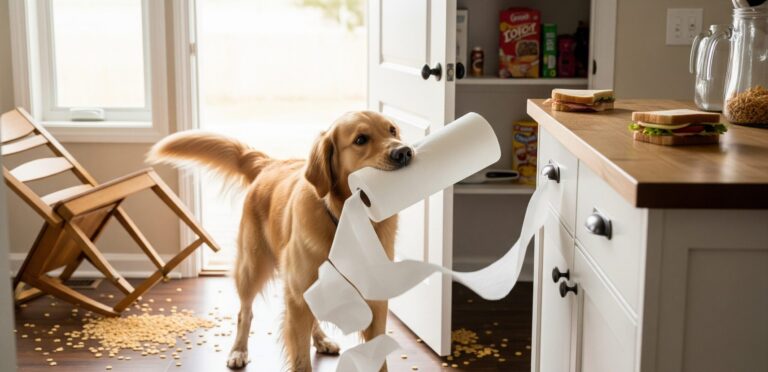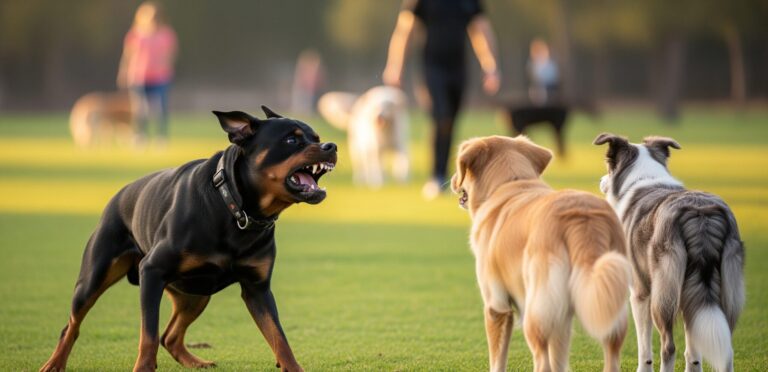Quick Guide: How to Take Care of a Dog
Bringing a new dog home is one of life’s most exciting moments. The wagging tail and the unconditional love are just the beginning of a beautiful friendship. But as you settle in with your new companion, you’ll quickly realize that this rewarding experience comes with significant responsibility. Knowing how to take care of a dog at home properly is the foundation for a long, happy life together.
This first-time dog owner guide is for anyone seeking basic dog care for beginners, whether you’re a single person, a family with kids, or simply want to learn more about responsible dog ownership. We will walk you through a step-by-step guide to your dog’s fundamental needs, including creating a safe home, nutrition, exercise, grooming, training, and health care. We will also cover some special care situations to ensure you feel prepared for every stage of your journey together.
1- Creating a Safe and Comfortable Home
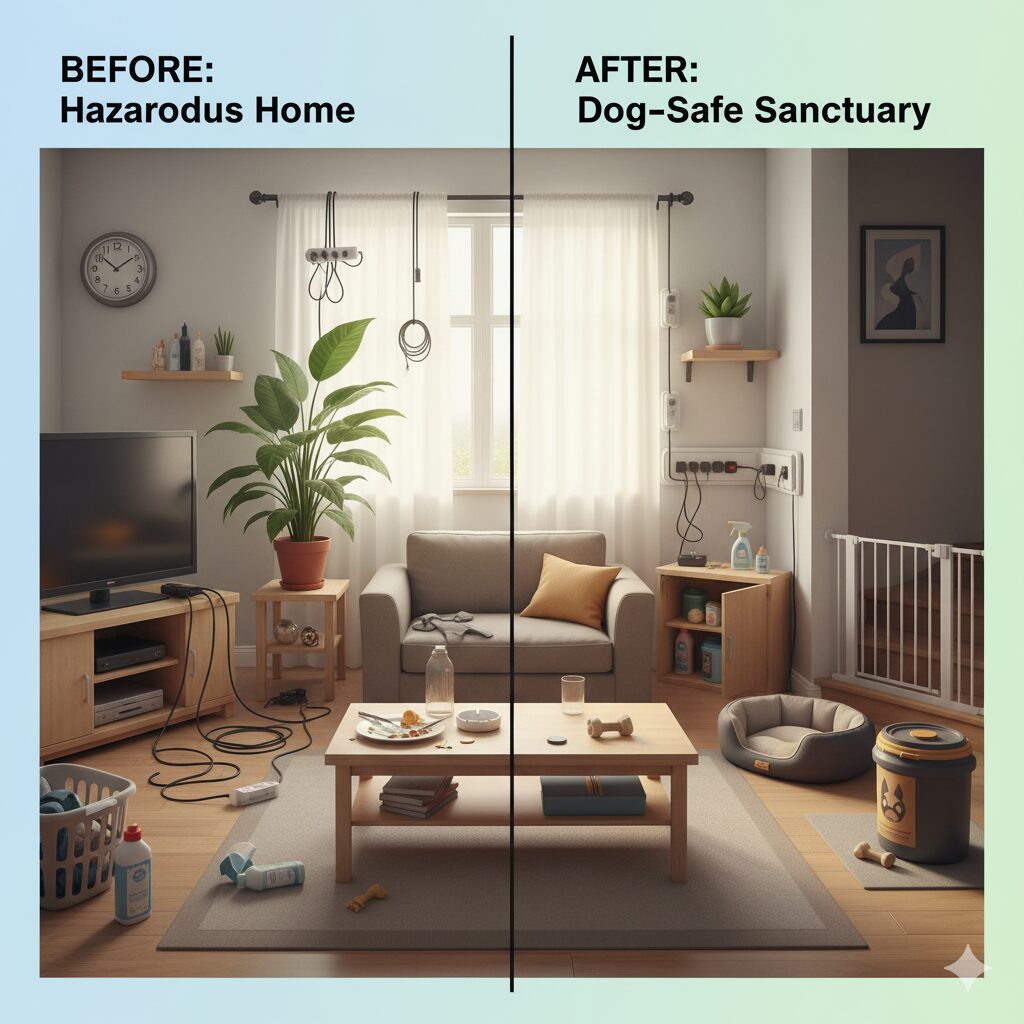
The first step in caring for your new friend is to provide a safe and welcoming environment. Your dog needs a space to call its own, where it can rest and feel secure.
Shelter: A Space of Their Own
Every dog needs a dedicated, safe space. This could be a comfortable dog bed in a quiet corner of the living room or a training crate with a soft blanket inside. This spot should be warm and away from drafts. A place where your dog can retreat when they need some alone time. The ASPCA recommends ensuring your pet has a warm, quiet place to rest, away from the floor. Washing your dog’s bedding often will keep their space clean and inviting.
If your dog spends time outdoors, they must have access to shade and plenty of cool water in hot weather. Provide a warm, dry, covered shelter when it’s cold.
Dog-Proofing Your Home
Just like with a toddler, you need to dog-proof your house to prevent accidents. Learning how to take care of a dog at home starts with removing potential hazards. Here is a simple checklist to get you started:
- Secure Wires and Cables: Dogs, especially puppies, love to chew. Secure loose electrical cords to prevent shocks or ingestion.
- Store Chemicals Safely: Keep all cleaning supplies, medications, and chemicals in locked cabinets or on high shelves.
- Know Toxic Plants and Foods: Many common household items are toxic to dogs. Be sure to keep the following away from your furry friend:
- Foods: Chocolate, onions, garlic, grapes, raisins, xylitol (an artificial sweetener), and alcohol.
- Plants: Lilies, tulips, oleander, and sago palms are just a few common plants that are poisonous to dogs.
For a comprehensive list of toxic substances, the ASPCA Animal Poison Control Center is an excellent resource.
2- Nutrition: Fueling Your Furry Friend

A healthy and well-maintained diet is essential for your dog’s health. What you feed your dog has a direct impact on their energy levels, coat health, and overall longevity.
Choosing the Right Food
The dog food aisle can be overwhelming, but choosing a high-quality, premium dog food is one of the most important dog health care tips. A dog’s nutritional needs change based on their age, breed, and size.
- Puppies: Need a high-quality puppy food that supports their growth and development.
- Adult Dogs: Require a balanced diet formulated for adult maintenance.
- Senior Dogs: May need food with fewer calories and different nutrients to support aging joints and a slower metabolism.
Always look for a food that lists a specific meat (like chicken or lamb) as the first ingredient, not a meat by-product.
Feeding Schedule
Consistency is key when it comes to feeding. According to PetMD, a good feeding schedule is:
| Age of Dog | Recommended Meals Per Day |
| Puppies (8-12 weeks) | 4 meals |
| Puppies (3-6 months) | 3 meals |
| Puppies (6 months to 1 year) | 2 meals |
| Adult Dogs (1 year and older) | 1-2 meals |
Larger breeds or those prone to bloat often do better with two smaller meals.
Water is Vital
Provide clean and fresh water to your dogs. Make sure to wash their water bowl daily to prevent bacteria from building up.
Treats and Human Food
Treats are a great tool for training, but they should be given in moderation. Treats and other additions should not make up more than 10% of your dog’s daily caloric intake. Avoid feeding your dog table scraps, as many human foods are not only unhealthy but can also be toxic and lead to health problems like obesity and pancreatitis.
3- Exercise and Mental Stimulation: A Happy Dog is a Tired Dog
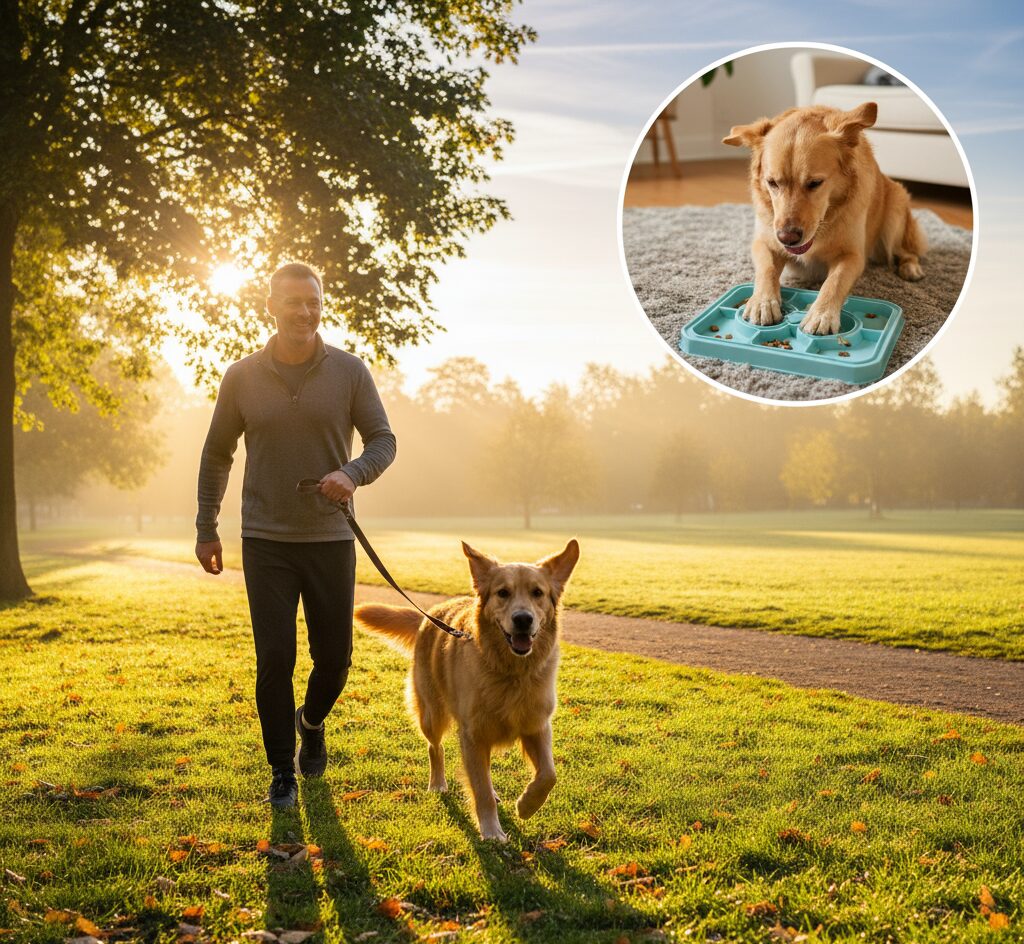
A bored dog is often a destructive dog. Daily exercise and mental enrichment are crucial for your dog’s physical health and mental well-being.
Daily Physical Activity
Daily walks, runs, and active playtime are essential for burning calories This keeping your dog’s muscles strong. The amount of exercise a dog needs varies significantly by breed. A Border Collie will require much more activity than a Basset Hound. Regular physical activity helps prevent boredom-related behaviors like chewing, digging, and excessive barking.
Mental Enrichment
To keep your dogs active and responsive, mental enrichment and training are critical for overall dog health. This is a key tip for anyone learning how to take care of a dog by themselves, as it can help manage high energy levels indoors. Some great ways to engage your dog’s brain include:
- Puzzle Toys: These toys require your dog to solve a problem to get a treat.
- Training Sessions: Short, positive training sessions for new tricks or commands are a great way to bond and work their mind.
- Interactive Games: Games like fetch, hide-and-seek, or nose work engage their instincts.
4- Grooming: More Than Just Looking Good
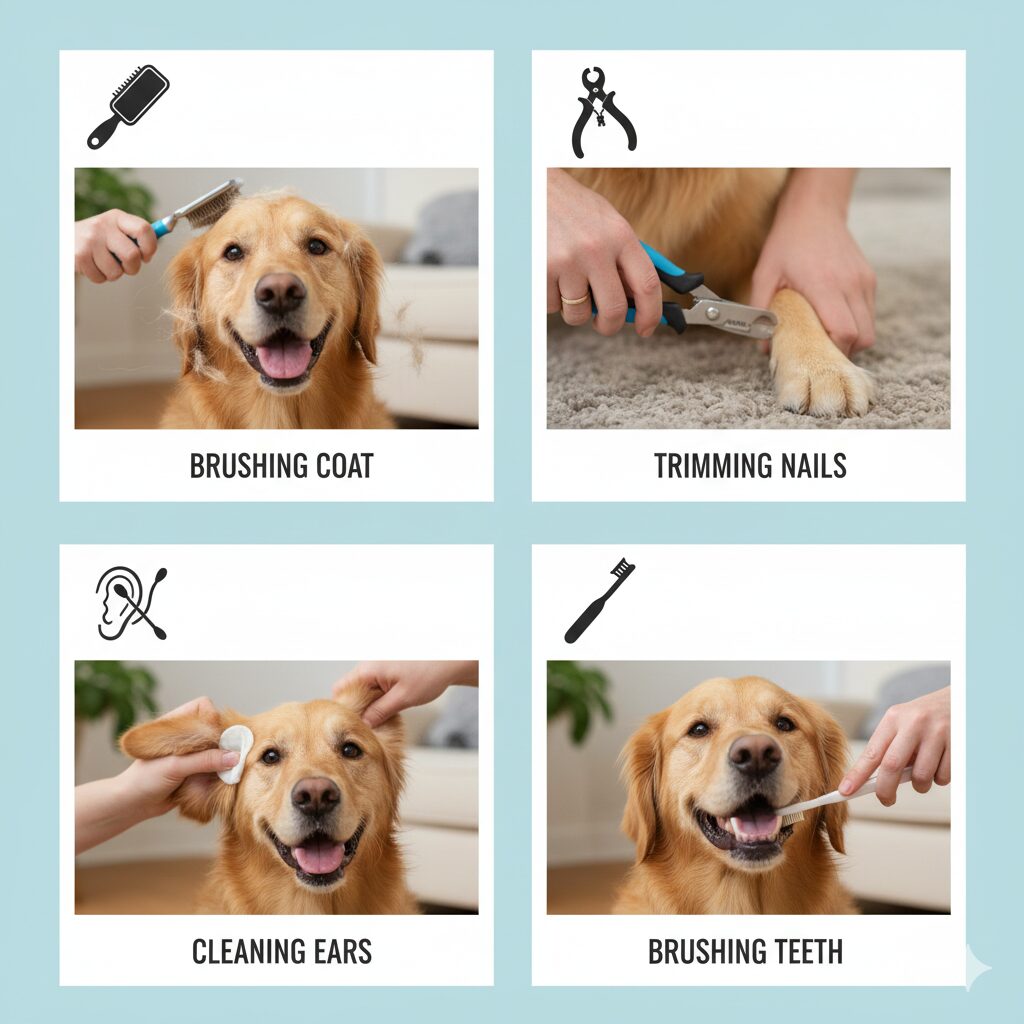
Grooming is an essential part of your dog’s health and behavior change. It’s not just about aesthetics; it helps you monitor their health and strengthens your bond.
Brushing
Regular brushing helps keep your dog’s coat healthy, reduces shedding, and distributes natural oils. It’s also a perfect time to check for fleas, ticks, lumps, or skin irritations. The frequency of brushing depends on your dog’s coat type. Long-haired breeds may need daily brushing, while short-haired breeds might only need it once a week.
Bathing
Most dogs only need to be bathed a few times a year, unless they get particularly dirty. Always use a dog-specific shampoo, as human shampoos have a different pH and can irritate their skin.
Nail, Ear, and Dental Care
- Nails: Overgrown nails can be painful and cause posture problems. You should trim your dog’s nails regularly. If the nails are making a scratching or clicking sound on the floor, you need to check them ASAP.
- Ears: Check your dog’s ears weekly for redness, odour, or discharge. It can be signs of infection. Clean them as needed with a vet-approved ear cleaning solution.
- Teeth: Learning how to take care of a dog’s teeth is vital for their overall health. Dental disease can lead to serious health issues, including heart and kidney problems. Brush your dog’s teeth several times a week with a dog-specific toothpaste and provide dental chews. An annual professional cleaning by your vet is also recommended.
5- Training and socialization: Building a Well-Behaved Companion
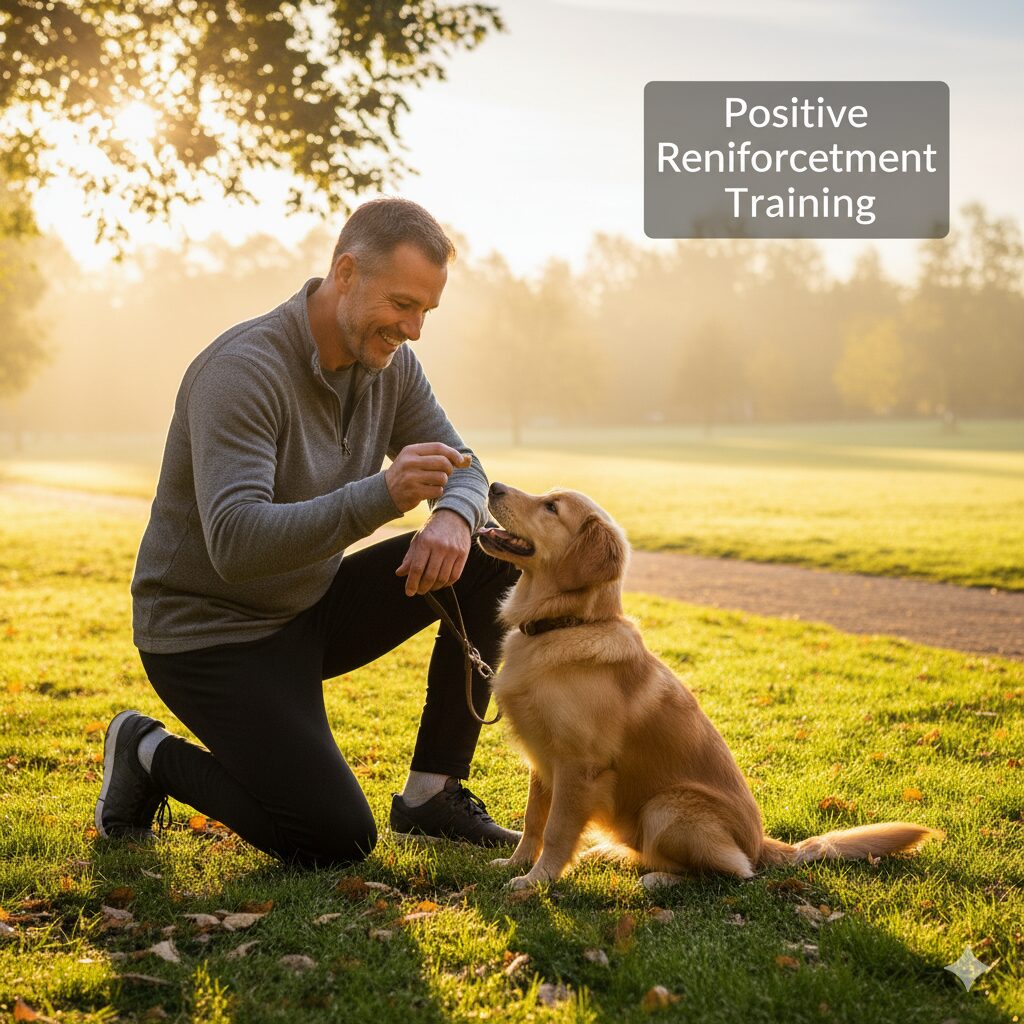
Positive, consistent training and early socialization are the keys to raising a well-behaved and confident dog.
Basic Training
Start with house training (potty training) and basic commands like sit, stay, and come. Frame training as a fun, positive experience using rewards like treats and praise. According to PetMD, training provides important mental stimulation and strengthens the bond between you and your pet.
Socialization
Proper socialization involves exposing your puppy to a variety of people, sounds, and other animals in a positive way. Early socialization (ideally between 3 and 16 weeks of age) is critical for preventing fear and aggression later in life. The AKC (American Kennel Club) has some great resources on this topic.
Dog care with kids
Involving children in dog care can be a wonderful experience, but it’s crucial to remember that an adult must always be the primary caregiver. Kids can help with supervised tasks, such as:
- Filling the food or water bowl.
- Helping with gentle brushing.
- Playing fetch or other interactive games.
- Participating in training sessions.
Teaching children how to interact respectfully with a dog is a life skill that ensures safety for both the child and the pet.
6- Health and Veterinary Care: Your Partner in Pet Wellness

Regular veterinary care is non-negotiable for responsible dog ownership. Your vet is your partner in keeping your dog healthy for years to come.
Routine Vet Visits
Adult dogs should have a comprehensive check-up at least once a year. These wellness exams allow your vet to catch potential health issues early.
Vaccinations, Fleas, and Ticks
Core vaccinations are essential for preventing serious and often fatal diseases. Your vet will recommend a vaccination schedule based on your dog’s age and lifestyle. Additionally, year-round prevention for fleas, ticks, and heartworms is crucial in most areas. These parasites can transmit dangerous diseases.
Spaying/Neutering
Spaying (for females) and neutering (for males) offer significant health and behavioral benefits. The ASPCA recommends this procedure by six months of age. It prevents unwanted litters and can reduce the risk of certain cancers and behavioral problems, such as roaming and aggression.
7- Special Care Scenarios
As a dog owner, you may encounter specific situations that require extra care.
How to take care of a dog after neutering/spaying?
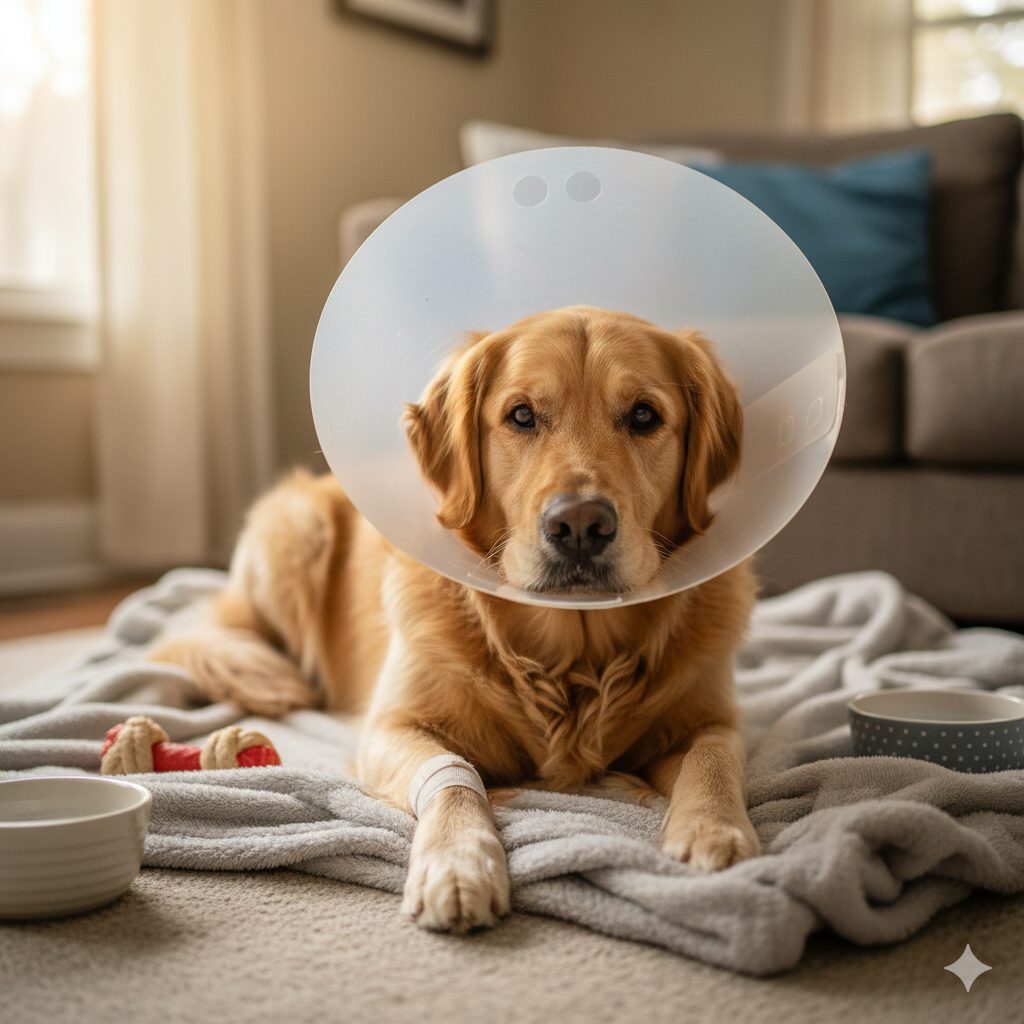
Post-operative care is crucial for a smooth recovery. Limit your dog’s activity for about two weeks, use a cone or e-collar to prevent them from licking the incision, and monitor the area daily for signs of swelling, redness, or discharge. Follow all your veterinarian’s post-op instructions carefully.
How to take care of a pregnant dog?
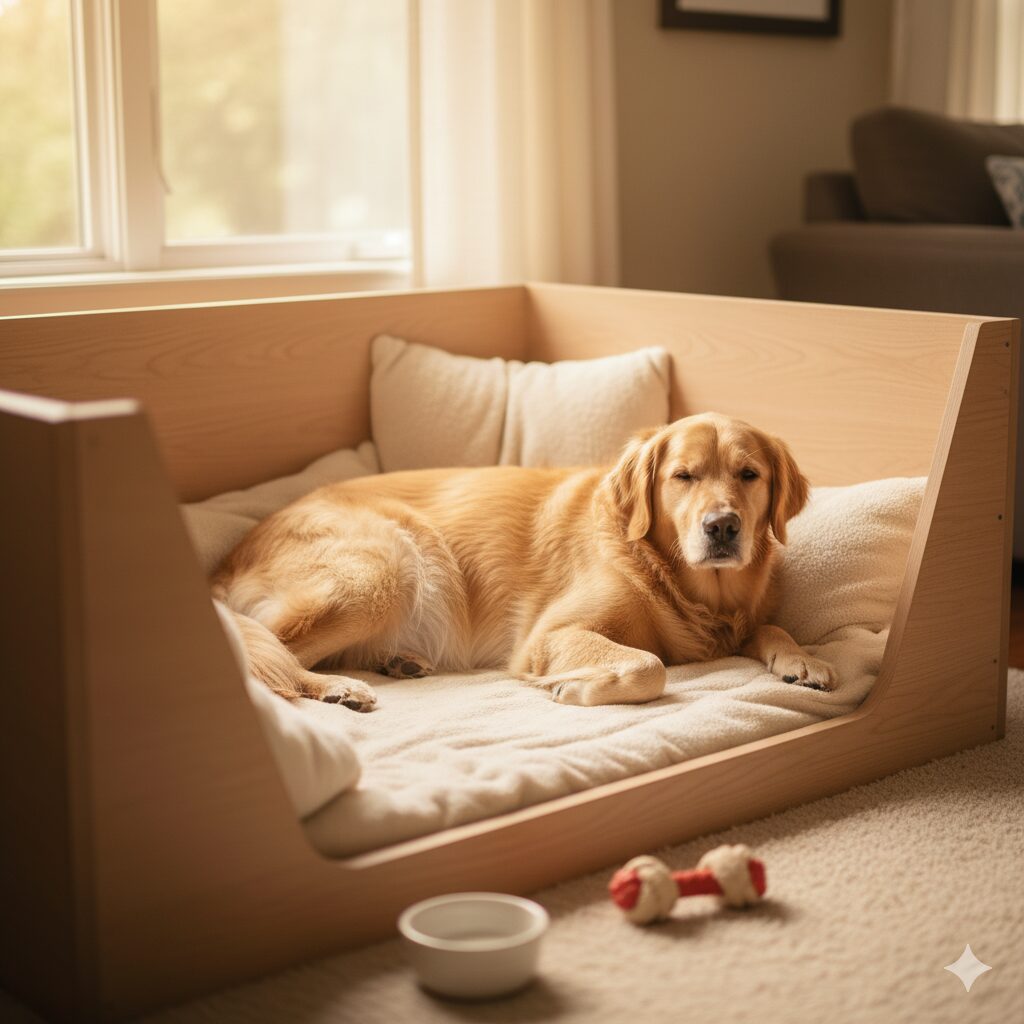
A pregnant dog requires increased nutrition, especially in the last few weeks of pregnancy. You will also need to prepare a quiet, comfortable “whelping box” where she can give birth. Veterinary supervision throughout the pregnancy is highly recommended.
How to protect dogs in heat?
When a female dog is in heat, she will need to be supervised closely to prevent an unwanted pregnancy. This means keeping her on a leash at all times when outdoors and securing your yard. Doggy diapers can help manage the mess indoors, and providing extra comfort can help with any behavioral changes.
How to take care of a blind dog?
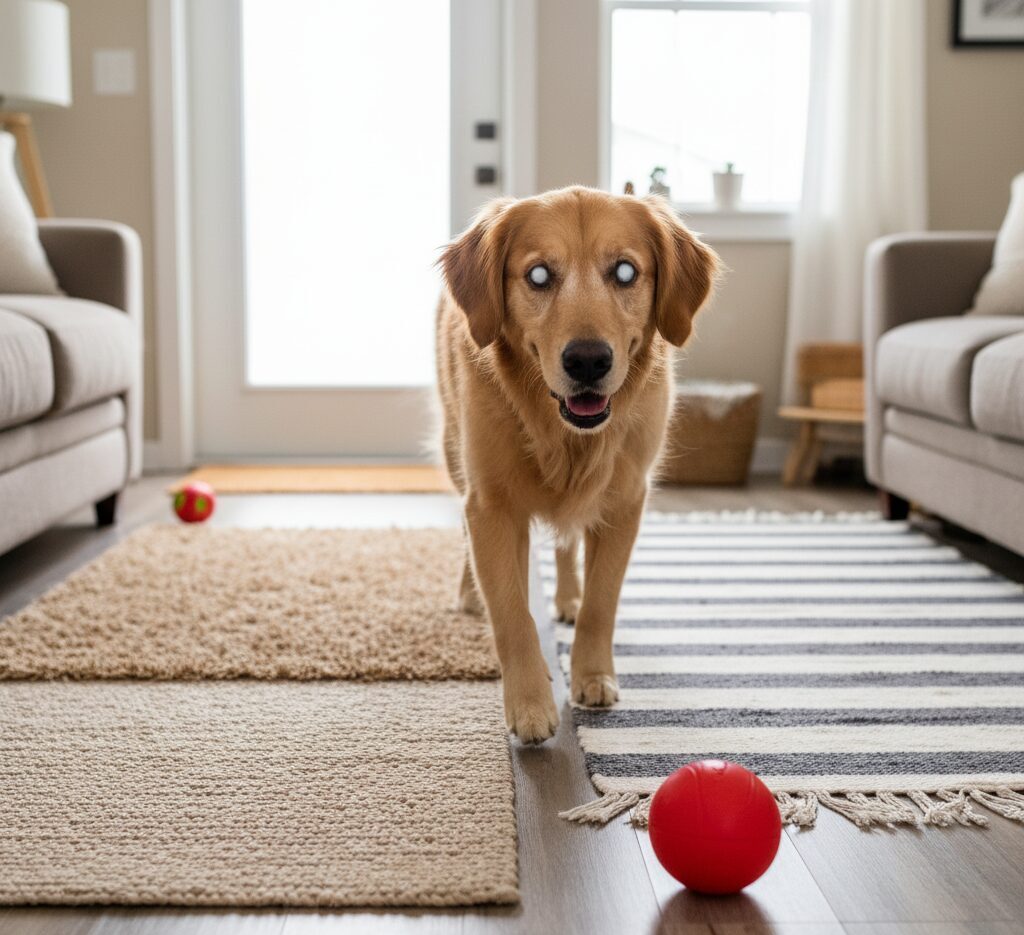
Caring for a blind dog involves making a few adjustments to your home. Keep furniture and your dog’s food, water, and bed in a consistent location. Use scent markers or different textured rugs to help them navigate. Audible cues and toys that make noise are also great tools.
8- Caring for Your Puppy
Learning how to take care of a puppy is a bit different from caring for an adult dog. Puppies have unique needs, including:
- Frequent Potty Breaks: Their small bladders mean they need to go outside every 1-2 hours.
- Socialization: The crucial window for socialization is between 3 and 16 weeks of age.
- Puppy-Specific Food: They need food with higher protein, fat, and calories to support their rapid growth.
- Chewing: Puppies chew a lot! Provide appropriate chew toys to redirect their behavior away from furniture and shoes.
9- Sample Daily Routine for Dogs
Creating a daily dog care routine provides structure and comfort for your dog. While routines vary by dog, here’s a good example for an adult dog:
- Morning (7-8 AM): Potty break, morning walk/playtime, and breakfast.
- Mid-day (12-1 PM): Potty break, maybe a quick play session or a training session.
- Afternoon (4-5 PM): Potty break, another walk or playtime, and a mental enrichment activity like a puzzle toy.
- Evening (6-7 PM): Dinner, a final potty break, and a final quick walk before settling in for the night.
- Bedtime (9-10 PM): Last potty break, then it’s time for bed.
10- Seasonal Care Tips
Dogs have different needs depending on the weather. Here are a few things to keep in mind:
- Summer: Watch for signs of heatstroke, and ensure they have plenty of shade and cool water. Avoid walking them on hot pavement, which can burn their paws.
- Winter: Protect their paws from ice and salt. Consider a dog coat for short-haired breeds, and avoid leaving them in the cold for too long.
How Much Does It Cost to Take Care of a Dog?
Understanding the financial commitment is a critical part of dog care. The cost can vary widely, but here is a breakdown of potential monthly and annual costs:
| Item | Estimated Annual Cost |
| Food | $300 – $800+ |
| Vet Visits (routine) | $50 – $200 |
| Flea/Tick/Heartworm Prevention | $100 – $300 |
| Grooming | $50 – $500+ |
| Toys, Treats, & Supplies | $100 – $300 |
| Total (Annual) | $600 – $2,000+ |
This doesn’t include unexpected veterinary emergencies, which can cost thousands of dollars. Pet insurance is a great way to mitigate these costs.
Final Words: The Rewarding Journey of Dog Ownership
Caring for a dog is a big commitment, but it is one of the most rewarding journeys you can embark on. By focusing on the key pillars of dog care
- Proper nutrition
- Regular exercise
- Consistent grooming
- Positive training
- Routine vet visits
You are setting your dog up for a long, healthy, and happy life. Remember that consistency is key, and the effort you put in now will build a lifelong bond with your new best friend.
Frequently Asked Questions(FAQs)
